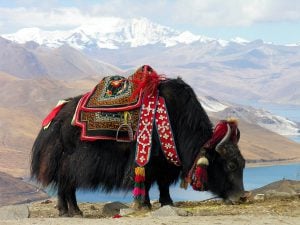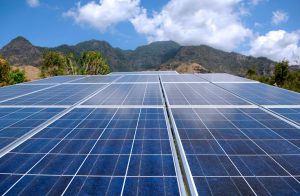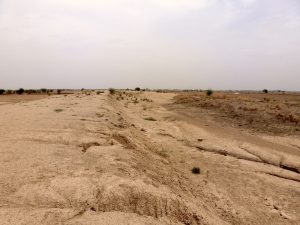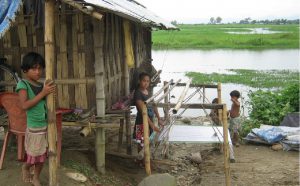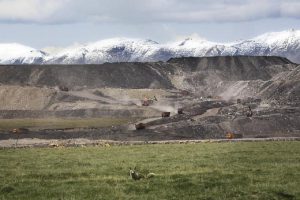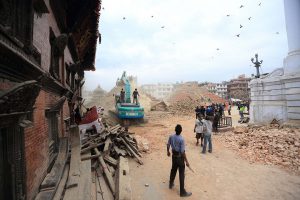While major international forums have advocated for safe drinking water, and many developing countries are striving to provide safe drinking water, the quality of drinking water in urban cities, secondary cities and in rural towns of Sindh in the Indus basin is unsafe to drink.
Figures of access to safe water in Pakistan and in Sindh are variable. According to the WaterAid’s Pakistan Country Strategy 2010-2015, around 50% of the population has adequate access to drinking water and a mere 15% to sanitation. In December 2015, the federal minister for science and technology said that 82% of Pakistanis consume dirty water. A recent report in Dawn said that 40% of water samples collected from different parts of Karachi were not properly chlorinated. According to World Health Organization (WHO) and United Nations Children’s Fund (UNICEF), in 2012, only 36% of Pakistan’s population had access to piped water.
![The state of water infrastructure in Karachi leaves much to be desired [image by Amar Guriro]](/wp-content/uploads/2016/08/DSC0080.jpg)
According to a World Wide Fund for Nature (WWF) report titled, “Pakistan’s Waters at Risk”, 20% to 40% of the hospital beds in Pakistan are occupied by patients suffering from water-related diseases, such as typhoid, cholera, dysentery and hepatitis, which are responsible for one third of all deaths. The WWF report further says: “poor water and sanitation is a major public health concern. Waterborne diseases are responsible for substantial human and economic losses. These include loss of millions of working hours of productivity annually, and associated costs for health care. Reduction in the occurrence of water borne diseases will go a long way in the efforts to alleviate poverty.”
Unfortunately, proper and authoritative data on drinking water quality for Sindh is not readily available. Whatever little data is available shows that the drinking water quality in all cities and towns of Sindh is unsafe and does not meet the WHO’s drinking water guidelines.
In 2013, the Pakistan Council of Research in Water Resources (PCRWR) collected and analysed 28 samples of water, collected from different localities of Karachi. Of them, only two were fit for consumption, and the rest 26 samples had bacterial contamination.
PCRWR conducted bacteriological tests on drinking water in Hyderabad, and found that all the 15 sources monitored in Hyderabad city were found unfit to drink mainly due to bacteriological contamination (93%), excessive levels of iron (47%) and turbidity (93%). A local study collected 52 domestic water samples in Karachi and analysed them for presence of bacterial contamination. The results showed that 50 out of 52 samples had bacteriological contamination. In Karachi, more than 20,000 children die annually, with the majority of deaths caused by drinking contaminated water.
Another study examined water quality in Thatta, a town about 100 km east of Karachi, in 2014. The study found elevated levels of some heavy metals. Presence of bacterial contamination and heavy metals that exceeded the WHO drinking water guidelines was also noted in Karachi and Hyderabad tap waters, in 2014, under a separate study.
Water treatment plants in various towns in Sindh draw their raw water from the Indus River, or from canals, depending on their location. The surface water bodies in Sindh are polluted, with the degree of pollution varying from one location to another.
This means that the water from rivers, canals and streams in Sindh require adequate treatment to make it safe for drinking. Water treatment plants convert contaminated water to safe drinking water. They are designed according to the type of contaminants in the water. No one water treatment system would be applicable to all types of water.
Improving water quality
Technically, it is easy to provide safe drinking water in Sindh, provided there is willingness on part of the government; water service providers display professional attitude towards water treatment; capacity building of staff is done on regular basis; and water governance is improved.
In addition to proper water treatment, and monitoring of water quality by a third party; the water should be supplied for 24 hours per day. There is a strong technical reason for this – when there is no water in the water pipeline, negative pressure is created and sewage is sucked in the pipeline, due to poor jointing of pipelines. Water leaks should be plugged in; water theft, or water given to influential people, should be stopped; and water wastage, which is massive in the comparatively modern residential areas of Karachi’s Clifton and defence housing authority areas, needs to be controlled. It will be much more sensible if the supply in the urban centres of Sindh is metered. This will also take care of drinking water shortages as well.
In some remote rural towns, it may not be possible to provide disinfection. In such cases, it is suggested that the slow sand filter units should be followed by another filter units, with a lower filtration rate. While slow sand filters are a very effective barrier against disease transmission, the multi-barrier system, suggested here in the shape of additional filters in series, will provide safe water, provided that the water treatment plant is operated and maintained properly. Even under the flood conditions, the suggested system will provide safe drinking-water.
Conventional water treatment plants (as in Karachi and Hyderabad) cannot remove heavy metals or pesticides. It is, therefore, essential that the raw water sources are taken over by the water service providers. They then, in turn, ensure that no agrochemicals or industrial wastewaters are discharged in the raw water sources.
Many developing countries in Asia supply safe drinking water in adequate quantities. This can also be done in Sindh province, with a little “out-of-the-box” approach. For example, the water service providers in Karachi can develop interactive maps. Putting the cursor on, say, Clifton area, should give microbial content of drinking water in that area. Another example would be starting a Q&A (questions and answers) segment on the website of the water service providers in Karachi, where consumers can get answers to their question on telephone, or by email. Water service providers in Sindh have to go an extra mile, if they want to provide safe drinking water.
![<p>Many drains in Karachi carry untreated effluents [image by Amar Guriro]</p>](https://dialogue.earth/content/uploads/2016/08/DSC0146.jpg)
